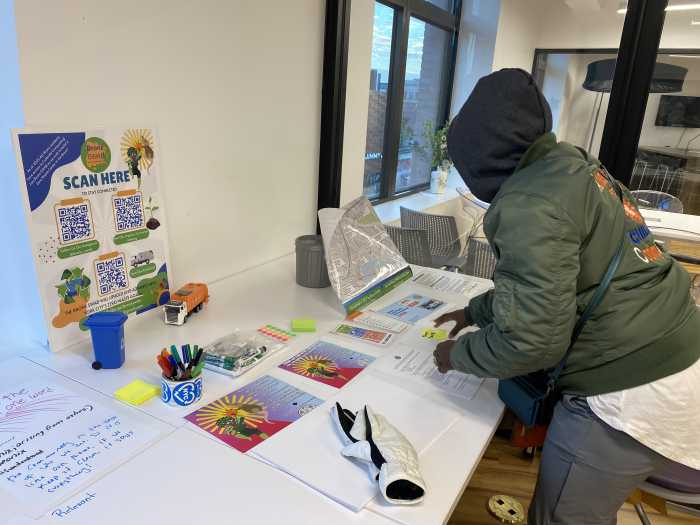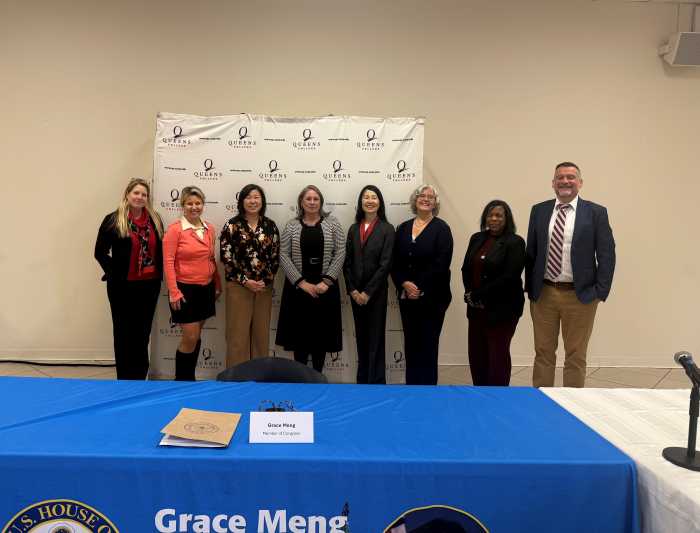
BY SEAN EGAN | From unnerving national news to local scares to the threat of ever-rising rents, last year gave locals plenty of reasons to go out drinking — and according to data released by the State Liquor Authority (SLA), they have more options than ever before as to where to make merry and/or drown their sorrows, as 2016 saw a significant uptick in the number of establishments granted full liquor licenses. All told, 22 new libationary locations holding On-Premises Liquor licenses opened in Chelsea’s 10011 zip code — the most of any in Manhattan. Meanwhile, about 30 new On-Premises Liquor licenses were granted in the Hell’s Kitchen area (adding the data for the 10018, 10019, and 10036 zip codes).
These 2016 stats surprised Paul Kermizian, CEO and a co-founder of the retro game/craft beer-centric Barcade (148 W. 24th St., btw. Sixth & Seventh Aves.) — though with a location in Williamsburg (the neighborhood tied with Chelsea for most new licenses city-wide) his team is good at predicting up-and-coming areas.
“We liked Chelsea just because of the, at the time, the very recent influx of tech companies and offices of young people and younger companies… I guess other people must have thought that too,” said Kermizian of the location, which opened in 2014, and targeted a happy hour and group crowd. “We were anticipating that kind of business, and it’s delivered,” he said, noting that they now refer to Chelsea as their “flagship location.”
As per the SLA, the On-Premises Liquor license class is “generally considered to be the standard ‘bar’ license” which “allows on-premises consumption of liquor, wine and beer,” though food must also be served at the establishment. Before the SLA grants licenses, however, applicants must present their case to Community Board 4 (CB4), hear their concerns, and get their go-ahead — and that blessing has teeth; the SLA often heeds the advice of CB4.
“You’re seeing just a change overall in the types of establishments that end up getting leases,” postulated CB4 Chair Delores Rubin, saying landlords often hold out to lease to profitable bars and restaurants. “You have the High Line really adding an element to that neighborhood which makes the real estate extremely valuable… I think it’s really a function of how the real estate [market] has changed more-so than there are very thirsty people out there who are asking for bars and restaurants.”
Nonetheless, Rubin and the board examine each case individually, “weigh[ing] the concerns of those that live in the community and the businesses that are trying come into the community,” and trying to keep the area economically competitive. Of course, there is always the potential for problems — and that’s where CB4 tries to remain particularly vigilant. It’s had issues in the past with “bad operators” — most recently, Il Bastardo (191 Seventh Ave., btw. W. 20th & 21st Sts.), whose boozy brunches leave unruly customers spilling out onto the street, acting “completely disrespectful to where they are in the world.”
“Unfortunately the success for [Il Bastardo] monetarily creates huge quality of life issues,” Rubin said, noting that laying out guidelines with operators before opening often helps curtail such issues. “I think good operators will work with the community to ensure that, when these problems do arise for the community, to figure out how to go ahead and put something in place that mitigates it as much as possible.”
“We’re as strict as you can be on ID-ing, and ensuring that everyone’s behaving properly, and having security at the door,” Kermizian elucidated, noting these efforts deter trouble. “I think for bars and restaurants with a liquor license, that’s how to ensure you get along with your neighbors: Make sure you’re playing by the rules.”
According to Rubin, “I think where we try very hard is to not throw everyone in a bucket; to really look at what the operator is proposing, the history of that operator if they have a history, taking into account the history of the location, and also hearing from people,” she said, asserting that when these dialogues have been initiated early, “the outcome has been favorable.”
That was certainly the case for The Brazen Tavern (356 W. 44th St., btw. Eighth & Ninth Aves.), which opened last fall in Hell’s Kitchen, according to co-owner Damien Rafferty.
“The fact that we’ve worked in the neighborhood a long time I think was kind of appealing to [CB4]; that we’ve worked in establishments that never really had a blemish on any of their liquor licenses, or ever had any trouble with the SLA,” said Rafferty, who has worked in the neighborhood for nine and a half years, and who has a partner who worked at McAnne’s in the Port Authority for 17.

“We know a lot of people in the neighborhood and feel like we’re part of the community,” he explained, noting that their status in the area helped bring in a steady clientele from the get-go (aided by NFL games, their hot drinks, and a “very attractive lounge area” featuring a homey fireplace). “It kind of got us off the ground running really, which helped a lot.”
However, getting board support and a license is usually only the first hurdle for new bars/restaurants. Competition, naturally, is stiff. Bar Truman, for example — formerly located in Chelsea Market — was granted its license in June, and has already shuttered its doors. Similarly, The Fillmore Room (146 10th Ave., at W. 19th St.) also called it quits, after being granted a license in early January — among others. Once running, then, operators are tasked with setting themselves apart in a crowded market, lest they suffer a similar fate.
“A lot of people, they just come into the bar area, for the most part, so I would say there probably is a lot of competition, because the back [dining] part, we’re finding, is more challenging,” described Robert Simonton Jr., general manager of Chelsea Station (290 Eighth Ave., btw. W. 24th & 25th Sts.). Since opening in August, they’ve been steadily building a roster of regulars, due to events like their Code NYC Unplugged acoustic nights.
“We also have a fireplace from the Biltmore Hotel — a lot of the fixtures we have here are from the Biltmore Hotel that were preserved,” Simonton revealed, saying that these features help draw people in. Simonton, as well as Rafferty, noted that the holidays, and the parties that came with them, helped give a boost to business.
Positioned right underneath the High Line, location is a key part in differentiating Sons & Daughters (85 10th Ave., btw. W. 15th & 16th Sts.), which opened last July. While tourists are welcome to come get “a taste of New York,” Mary Massey, the bar’s director of marketing, said the concept of the bar is that it’s “by New Yorkers, for New Yorkers,” with their food and drink menu highlighting “New York staples that we put our own twist on.” Massey cited Chelsea, specifically, as an “an important neighborhood in the city right now,” that she expects to make even more of a resurgence as Hudson Yards develops.
“We’ve been trying to focus on ourselves as a neighborhood destination, a place where both people who live in the residences close by or people who work close by will think of us as sort of their hometown bar,” said Massey, who also stressed the care put into their “top-notch” menu. “We want people to not only remember that they had a good time, but really remember how great the food and beverage were.”
Despite the challenges of setting up shop in a saturated spot, the community and operators remain optimistic about the area and its future.
“You have an entire corridor, like in areas of Chelsea and Hell’s Kitchen, where there’s a ton of different choices,” said Rubin. “You will get folks who will flock to that area because they know they can’t miss. They can’t go wrong if they go to Chelsea; they can’t go wrong if they go to Hell’s Kitchen to find exactly the mood, the taste, or the crowd that they’re looking for.”
“It just kind of seems to be an area that’s kind of developing up more, and developing around us,” mused Simonton. “I think it’s a good place to be in right now — and in the next five years, I think it’s going to be even better to be in.”



































